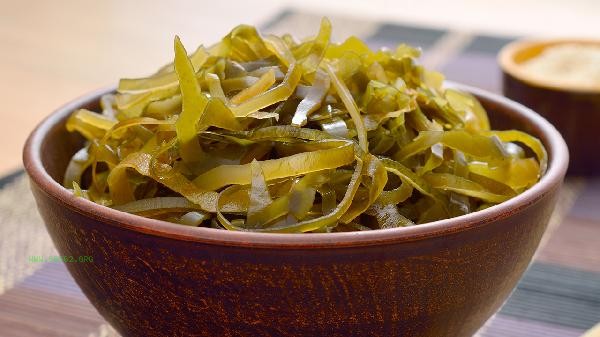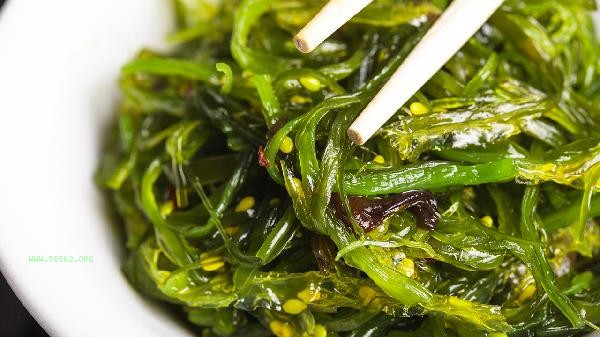It is better to use cold water to soak seaweed, which can retain more nutrients and have a better taste. Soaking in hot water may lead to nutrient loss or the outer layer becoming soft and the inner layer becoming hard. When soaking kelp in cold water, the water temperature should be close to room temperature, and the amount of water should completely cover the kelp. The soaking time in cold water is relatively long, usually 2-3 hours, during which the water can be changed 1-2 times to remove surface salt and impurities. This method can maximize the retention of water-soluble vitamins, brown algae polysaccharides and other active substances in kelp. After soaking, the kelp texture is uniform and elastic, suitable for cold mixing or stewing soup. The white frost on the surface of dried kelp is natural mannitol, which does not require deliberate scrubbing. After soaking in cold water, gently rinse. Although soaking in hot water can shorten the time to 20-30 minutes, high temperatures can damage the gelatinous layer on the surface of kelp, leading to the loss of water-soluble nutrients such as iodine and vitamin B1. When the water temperature exceeds 60 degrees Celsius, the outer layer of kelp will quickly absorb water and expand, becoming soft and rotten, while there may still be residual hard cores inside. When in urgent need, you can choose warm water at around 40 degrees Celsius as a compromise, but pay attention to observing the foaming state to avoid excessive softening. Salted kelp has a high sediment content, and soaking it in hot water may cause sediment to seep into the tissue, making it more difficult to clean.

It is recommended to consume pre soaked seaweed on the same day. Unused seaweed should be refrigerated and stored. Cold kelp can be paired with vinegar and minced garlic to help absorb minerals. When stewing, add it for the last 10 minutes to avoid it becoming hard after prolonged cooking. Kelp has a high iodine content, and patients with thyroid diseases need to control their intake. The soaking time can be extended to 6 hours to reduce iodine content. It is recommended to consume 2-3 times a week, with no more than 50 grams of dry weight per time. Paired with vegetables and fruits rich in vitamin C, it can improve the absorption rate of iron elements.










Comments (0)
Leave a Comment
No comments yet
Be the first to share your thoughts!